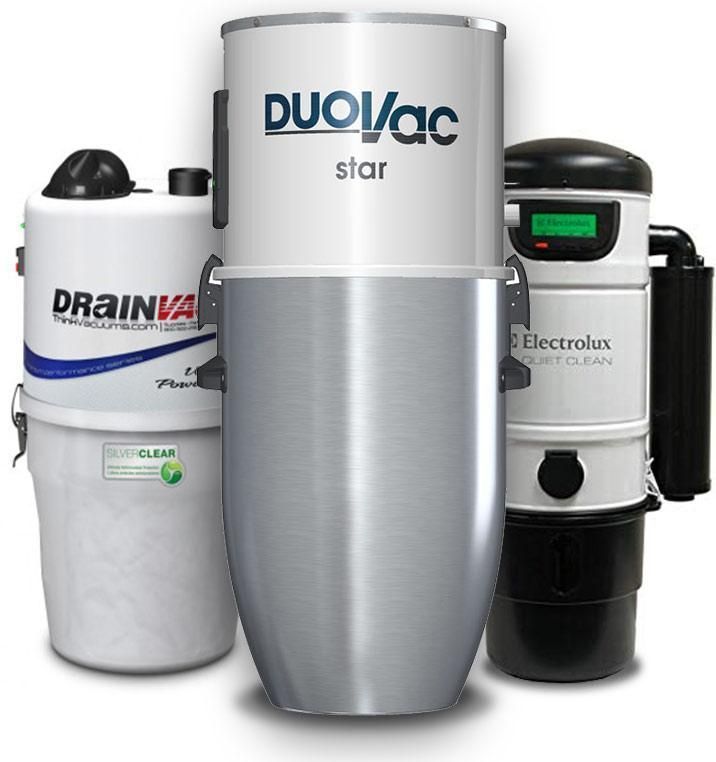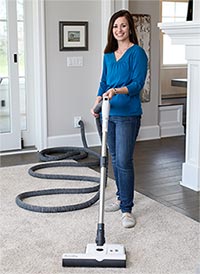Central Vacuum Systems and Maintenance Costs
Everything You Need to Know About Central Vacuum Systems: Common Issues, Repair Costs, and Maintenance Tips for a Cleaner Home
 A central vacuum system is a marvel of modern home convenience, transforming the way we clean our living spaces. Imagine never having to lug a cumbersome, corded vacuum from room to room again. Instead, with a central vacuum, you can effortlessly vacuum every corner of your home from a single, out-of-the-way unit. This system operates through a network of hidden channels behind your walls, leading to inlets strategically placed throughout your home. These inlets connect to vacuum hoses, offering the same powerful suction as a traditional vacuum but with unmatched ease and efficiency.
A central vacuum system is a marvel of modern home convenience, transforming the way we clean our living spaces. Imagine never having to lug a cumbersome, corded vacuum from room to room again. Instead, with a central vacuum, you can effortlessly vacuum every corner of your home from a single, out-of-the-way unit. This system operates through a network of hidden channels behind your walls, leading to inlets strategically placed throughout your home. These inlets connect to vacuum hoses, offering the same powerful suction as a traditional vacuum but with unmatched ease and efficiency.
However, like any other complex system, central vacuums are not immune to issues and may occasionally require repairs. Let’s delve into the common problems you might encounter with a central vacuum system, the costs associated with fixing them, and some handy solutions to keep your system running smoothly.
Common Repairs Needed for Central Vacuums
-
Clogs
- Description: Even with professional installation, clogs can still happen. Pet hair, dust bunnies, and the occasional small object can create blockages in the hose, filter, or pipes, compromising the system's suction. You might notice a decline in performance either at one or all inlets in your home.
- Solution: For minor clogs, a portable shop vac can often do the trick. By connecting it to one of the inlets and using reverse suction, you might be able to clear out the debris. However, more stubborn clogs, especially those near the base unit, should be handled by a professional to avoid damage.
-
Electrical Failure
- Description: Over time, you might experience electrical issues, such as the vacuum not turning on or stopping unexpectedly. These issues could occur at individual inlets or within the main unit, often due to aging components or wiring problems.
- Solution: While you can attempt to reset the fuse connected to your central vacuum, most electrical issues should be left to an expert. An electrician can replace faulty wires, reconnect fuses, or even rewire sections of the unit if necessary.
-
Leaking Pipes
- Description: Damage to the PVC pipes running through your walls can occur, especially during home renovations or wall repairs. This damage can result in reduced suction at one or multiple inlets, despite the main unit functioning correctly.
- Solution: Fixing leaking pipes can range from replacing an inlet cover to more extensive work like replacing entire sections of piping. These repairs are best done by professionals to ensure proper sealing and function.
-
Broken Motor
- Description: If your central vacuum system won’t run and you’ve ruled out electrical problems, the motor might be the culprit. Motor issues are typically due to the unit's age and extensive use.
- Solution: Motor repairs are delicate and should be handled by professionals. Depending on the severity, you might need to repair or replace the motor. Professional repairs can also help maintain your unit’s warranty.
 Central Vacuum Repair Costs
Central Vacuum Repair Costs
The repair costs for central vacuum systems vary depending on the issue. Simple clogs can be cleared by a professional for about $50 to $100. However, more complex repairs, such as fixing electrical short circuits or replacing a motor, can involve costs for parts and labor, ranging from $15 to $60 per hour.
Dangers of Ignoring Central Vacuum Issues
It’s tempting to overlook minor problems like reduced suction or intermittent electrical issues, but ignoring these can lead to more severe and costly damage. What starts as a small clog can become a significant blockage, and minor electrical problems can cause long-term damage, potentially requiring a complete system replacement.
Repair or Replace?
As your central vacuum system ages, there may come a time when repairs are no longer feasible, and replacement becomes necessary. The good news is that replacing the main unit isn’t as expensive as the initial installation since the inlets and piping are already in place. New central vacuum units can range from $300 to $2,000, depending on their size, power, and features.
Conclusion
Central vacuum systems offer unparalleled convenience and efficiency in home cleaning. However, like any home appliance, they require regular maintenance and occasional repairs. Understanding the common issues and knowing when to call in a professional can help you keep your system running smoothly for years to come. Investing in timely repairs not only ensures optimal performance but also prolongs the life of your central vacuum system, making it a worthwhile addition to your home.




Log In
Create New Account